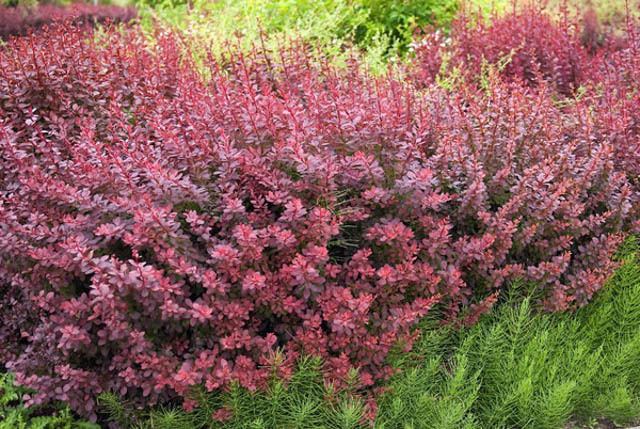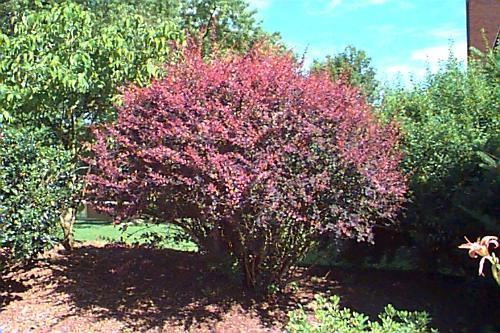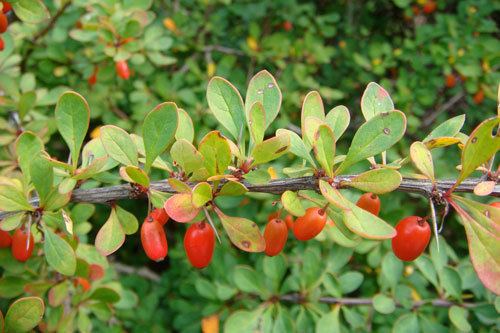Rank Species | Genus Berberis Higher classification Barberry | |
 | ||
Similar Barberry, Common barberry, Bridal‑wreaths, Cotoneaster, Spiraea japonica | ||
Berberis thunbergii atropurpurea red leaf japanese barberry
Berberis thunbergii (Japanese barberry,Thunberg's barberry, or red barberry) is a species of Berberis, native to Japan and eastern Asia, though widely naturalized in China and in North America.
Contents
- Berberis thunbergii atropurpurea red leaf japanese barberry
- Berberis thunbergii rose glow
- Description
- Identification
- Cultivation
- Invasive species
- References

Berberis thunbergii rose glow
Description

It is a dense, deciduous, spiny shrub which grows 0.6 to 2.5 m (2 to 8 ft) high. It has deeply grooved, brown, spiny branches with a single (occasionally tridentine) spine (actually a highly modified leaf) at each shoot node. The leaves are green to blue-green (reddish or purple in some horticultural variants), very small, spatula to oval shaped, 12–24 mm long and 3–15 mm broad; they are produced in clusters of 2-6 on a dwarf shoot in the axil of each spine. The flowers are pale yellow, 5–8 mm diameter, produced in drooping 1-1.5 cm long umbrella-shaped clusters of 2–5; flowering is from mid spring to early summer. The edible fruit is a glossy bright red to orange-red, ovoid berry 7–10 mm long and 4–7 mm broad, containing a single seed. They mature during late summer and fall and persist through the winter.
Identification

This species is sometimes confused with Berberis canadensis (American barberry), Berberis vulgaris (European barberry), and other deciduous Berberis species; it is most readily distinguished by the flowers being produced in umbels, not racemes.
Cultivation
Berberis thunbergii is widely grown as an ornamental plant, both in Japan and elsewhere in the temperate Northern Hemisphere. Numerous cultivars have been selected, including plants selected for yellow, dark red to violet, or variegated foliage, erect growth (for hedge use), and dwarf size.
The purple-leaved form B. thunbergii f. atropurpurea has produced numerous cultivars, of which the following have gained the award:-
Invasive species
In recent years, Berberis thunbergii has been recognized as an invasive species in many parts of the eastern United States. The Plant Conservation Alliance's Alien Plant Working Group lists it among its "Least Wanted".[1] Japanese barberry is prohibited from being a seed contaminant in Michigan and banned from sale in Massachusetts.
This Berberis is avoided by deer, and has been replacing native species. Furthermore, the plant can raise the pH of the soil and affect soil nitrogen levels. Unlike B. canadensis and B. vulgaris, B. thunbergii does not act as a host for Puccinia graminis (black rust), a rust disease of wheat.
It is also an exceptionally favorable environment for ticks due to the high humidity present in barberry's dense foliage. It is hypothesized that spread of barberry is correlated with the spread of Lyme disease. [2]
